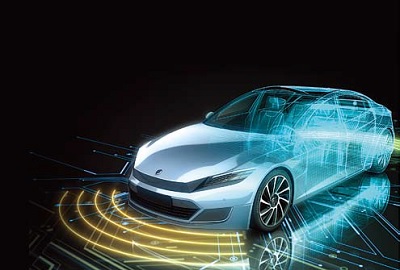
These designs are often based on entirely new architectures and have become so complex that advanced software tools are needed to enable development efforts.
Siemens announced that Mazda Motor Corp. has adopted the Capital™ electrical design software suite from Mentor, a Siemens business, to help maximise innovation in the design of next-generation automotive electrical systems. Recognised worldwide for its successful launch of innumerable innovative technologies, Mazda uses Capital for model-based generative design for the electrical and electronic systems of the entire vehicle platform. The Capital automated generative design flow helps Mazda automotive design teams manage design complexity and changes across the entire vehicle platform, minimising errors and reducing costs.
According to Siemens, Capital tools deliver real time feedback against target metrics such as cost, weight, and network bandwidth consumption. This allows engineers to explore alternative design approaches, which is extremely important for large scale system developments represented by electric and autonomous vehicles. The software also provides Mazda with extensive simulation and verification functionalities.
Electric development
At Mazda, from system design, harness design and verification down to manufacturing and service documentation, outputs of each process have been generated in its natural language, requiring designers to translate between processes and fill in the missing pieces using their talents and skills.
“In order to remove ambiguity while maintaining the diversity of expressions that are characteristics of these natural languages, we applied formal methods to eliminate the loss in information transfer and set a goal to build a development environment that is consistent and connected all the way through the manufacturing phase,” said Kazuichi Fujisaka, Technical Leader, Mazda Motor Corp.
“Furthermore, we also aim to shift to a development methodology that allows us to optimise the vehicle as a whole, with all possible variations being considered in the early development stage. To make this happen, we needed a development environment to visualise the entire vehicle circuitry and standardise our language, tools, and processes without compromise, creating standard models across the company. Mentor’s Capital technologies provide this environment and make Mazda’s electric development much more efficient,” added Fujisaka.
“One who keeps challenging what seems impossible leads innovation – a fact Mazda clearly understands, as evidenced by its long history of innovation,” said Martin O’Brien, senior vice president, Integrated Electrical Systems, Siemens Digital Industries Software.
He further said, “As a long-standing Capital customer, Mazda has proven to be a fast adopter of new capabilities, such as platform-level architecture optimisation spanning the electrical, electronic, networking, and embedded software disciplines. As a growing number of Japanese automotive OEMs adopt Capital, Mazda has established its reputation as a forward-thinking early adopter, with a long track record of leveraging our sophisticated technologies from their ‘customer first’ point of view.”
In addition to the Capital Electrical Design Software suite, Mazda also uses Siemens’ NX™ software and Teamcenter® portfolio for enterprise collaboration.
Air Jordans














